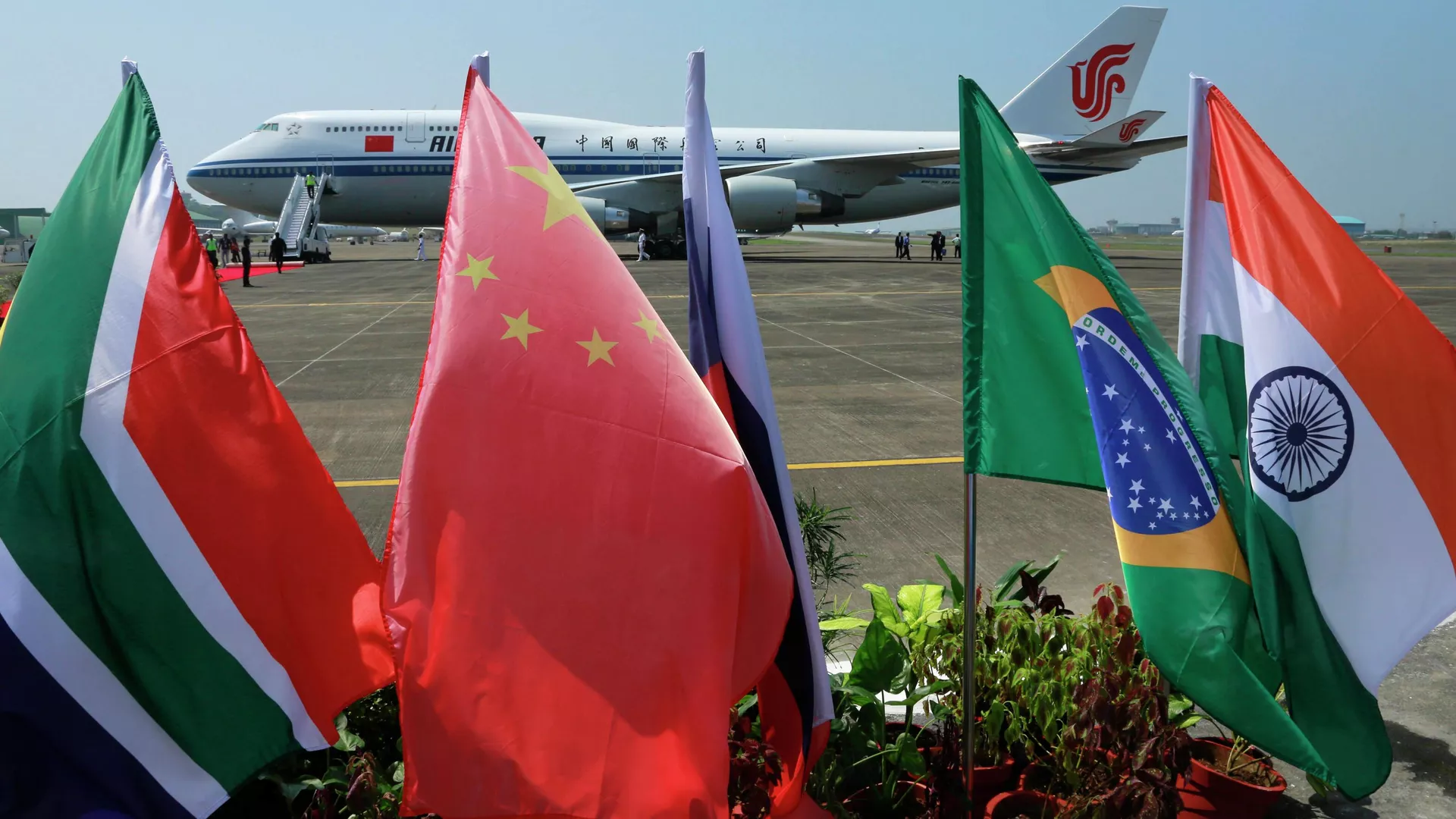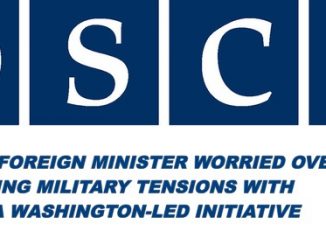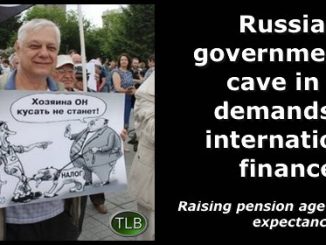
ER Editor: The 2023 BRICS Summit kicks off today in South Africa. Sputnik News (you need a VPN to access this from Europe) is giving a lot of covering to it. See this on Twitter / X — #BRICSSummit2023
Word on the back channels is that the vast majority of countries have signed onto BRICS anyway, and that we’re watching a show to get us to that point in the public eye. The UK, for example, is rumoured to have been on board since January of this year.
A reminder that the BRICS structure is believed to be the architecture for the Nesara/Gesara arrangements, organized around a new financial system based on quantum technology and real assets, such as gold. Countries are independent and sovereign under this system.
Remember those dim and distant days when the West was promoting a whole range of free trade deals (NAFTA, TTIP, etc.) that were basically anything but for signatory countries, that hampered the economic development of signatory countries, such as Mexico? That put global corporate interests and profits over taxpayers of all participating countries under those investor dispute courts, where the corporations would always win? Us neither.
🇨🇳🇿🇦 The President of China arrives in Johannesburg for the XV BRICS Summit in South Africa. “Change is coming that hasn’t happened in 100 years. And we are driving this change together.” — Xi Jinping #BRICSSummit2023pic.twitter.com/KCPDL4tNbJ
— 🅰pocalypsis 🅰pocalypseos 🇷🇺 🇨🇳 🅉 (@apocalypseos) August 21, 2023
How I wish his excellence president Vladimir Putin was attending the #BRICSSummit2023 so that we could welcome him at OR Tambo International Airport like Xi Jinping. But loyabhuti wase PhalaPhala wanted to arrest him with his DA 🚮🚮… pic.twitter.com/umSsU37DtF
— Menzi ka Zwide (@Menzi__Nxumalo) August 22, 2023
The Russian Federation has just arrived#BRICSSummit2023 🇧🇷🇷🇺🇮🇳🇨🇳🇿🇦#BetterAfricaBetterWorld 🌍 pic.twitter.com/OE1lT1o93a
— ATHI GELEBA 🇿🇦 (@AthiGeleba) August 22, 2023
As #BRICSSummit2023 gets underway, there’s a real sense of hope and excitement that the age of Divide and Conquer may be coming to an end to be replaced by Unite and Prosper.
The dominance of the #US Dollar has crippled developing nations. I discuss the alternative pic.twitter.com/48zd2eOhAv
— Chay Bowes (@BowesChay) August 21, 2023
While EU colonies are sitting in Greece, free states are sitting on the other side 😎
Leaders from more than 60 countries are expected at the BRICS summit
African countries, as well as countries that have applied for BRICS membership, were invited to the discussion. pic.twitter.com/D6TIGgBqth— Sprinter (@Sprinter99800) August 21, 2023
***
See Pepe Escobar’s take ––
Pepe Escobar: BRICS Plus-SCO Super Bloc vs. US Empire
See also —
BRICS Unleashes Game-Changing Plan for a Fair and Multipolar World Order
A website we often use and recommend is —
https://infobrics.org/
********
What’s on BRICS’ 2023 Summit Agenda?
EKATERINA BLINOVA for SPUTNIK NEWS
The largest-ever gathering of heads of state of the non-Western world within the framework of BRICS is due to kick off on August 22 in Johannesburg, South Africa.
The 15th BRICS Summit will take place in Johannesburg’s financial district of Sandton on August 22-24 headed by the leaders of Brazil, Russia, India, China and South Africa – the states which constitute the rapidly-evolving format.

Which Countries Want to Join BRICS?
An incentive to expand the group stems from the tectonic geopolitical changes which started to take shape during the COVID-19 pandemic and accelerated after the beginning of the Russian special military operation in Ukraine. A series of sweeping Western sanctions slapped on Russia have further disrupted the already fragile supply chains and global trade, hurting tremendously the countries of the Global South. The latter started to consider BRICS as an alternative platform for the world economy and lined up for membership in an organization that is expected to grow larger over time.
BRICS Currency
How Could BRICS Change the World Economy?
Increased turnover of national currencies in international economic transactions, de-dollarization, the improvement of payment mechanisms, as well as the strengthening of the role of the New Development Bank and the BRICS Contingent Reserve Arrangement are the key economic topics that will be discussed in detail at the group’s 15th summit.
What is the Purpose of the New Development Bank?
What is the Strategy for BRICS’ Economic Partnership?
The strategy’s major principles include full respect for the economic sovereignty of the member states; commitment to international law; openness, sharing of information and consensus in decision-making; recognition of the multipolar nature of the international economic and financial system; commitment to supporting sustainable development, strong, balanced and inclusive growth; as well as a commitment to mutually beneficial cooperation within BRICS.
What is BRICS and Its Purpose?
Source

••••
The Liberty Beacon Project is now expanding at a near exponential rate, and for this we are grateful and excited! But we must also be practical. For 7 years we have not asked for any donations, and have built this project with our own funds as we grew. We are now experiencing ever increasing growing pains due to the large number of websites and projects we represent. So we have just installed donation buttons on our websites and ask that you consider this when you visit them. Nothing is too small. We thank you for all your support and your considerations … (TLB)
••••
Comment Policy: As a privately owned web site, we reserve the right to remove comments that contain spam, advertising, vulgarity, threats of violence, racism, or personal/abusive attacks on other users. This also applies to trolling, the use of more than one alias, or just intentional mischief. Enforcement of this policy is at the discretion of this websites administrators. Repeat offenders may be blocked or permanently banned without prior warning.
••••
Disclaimer: TLB websites contain copyrighted material the use of which has not always been specifically authorized by the copyright owner. We are making such material available to our readers under the provisions of “fair use” in an effort to advance a better understanding of political, health, economic and social issues. The material on this site is distributed without profit to those who have expressed a prior interest in receiving it for research and educational purposes. If you wish to use copyrighted material for purposes other than “fair use” you must request permission from the copyright owner.
••••
Disclaimer: The information and opinions shared are for informational purposes only including, but not limited to, text, graphics, images and other material are not intended as medical advice or instruction. Nothing mentioned is intended to be a substitute for professional medical advice, diagnosis or treatment.





Leave a Reply